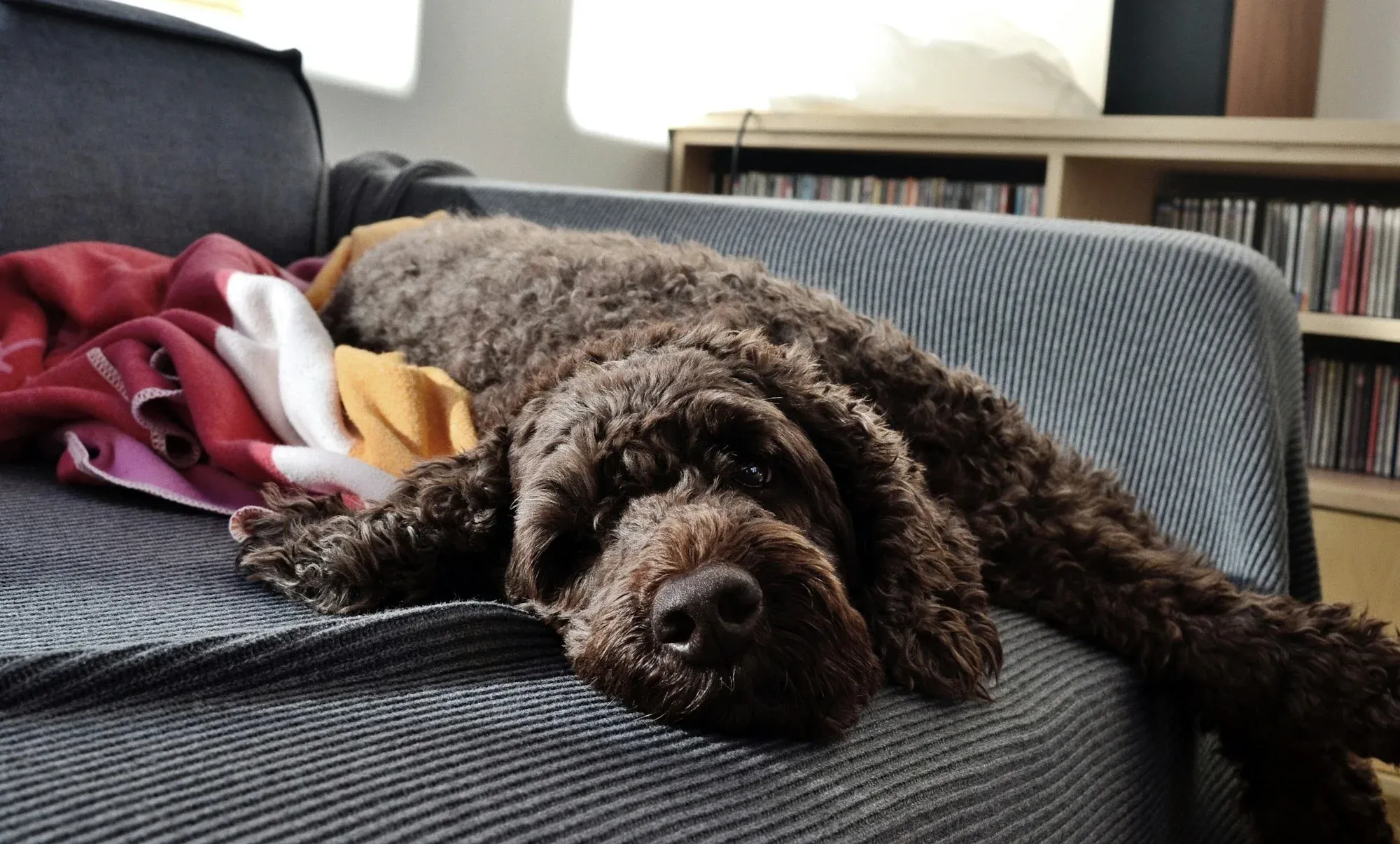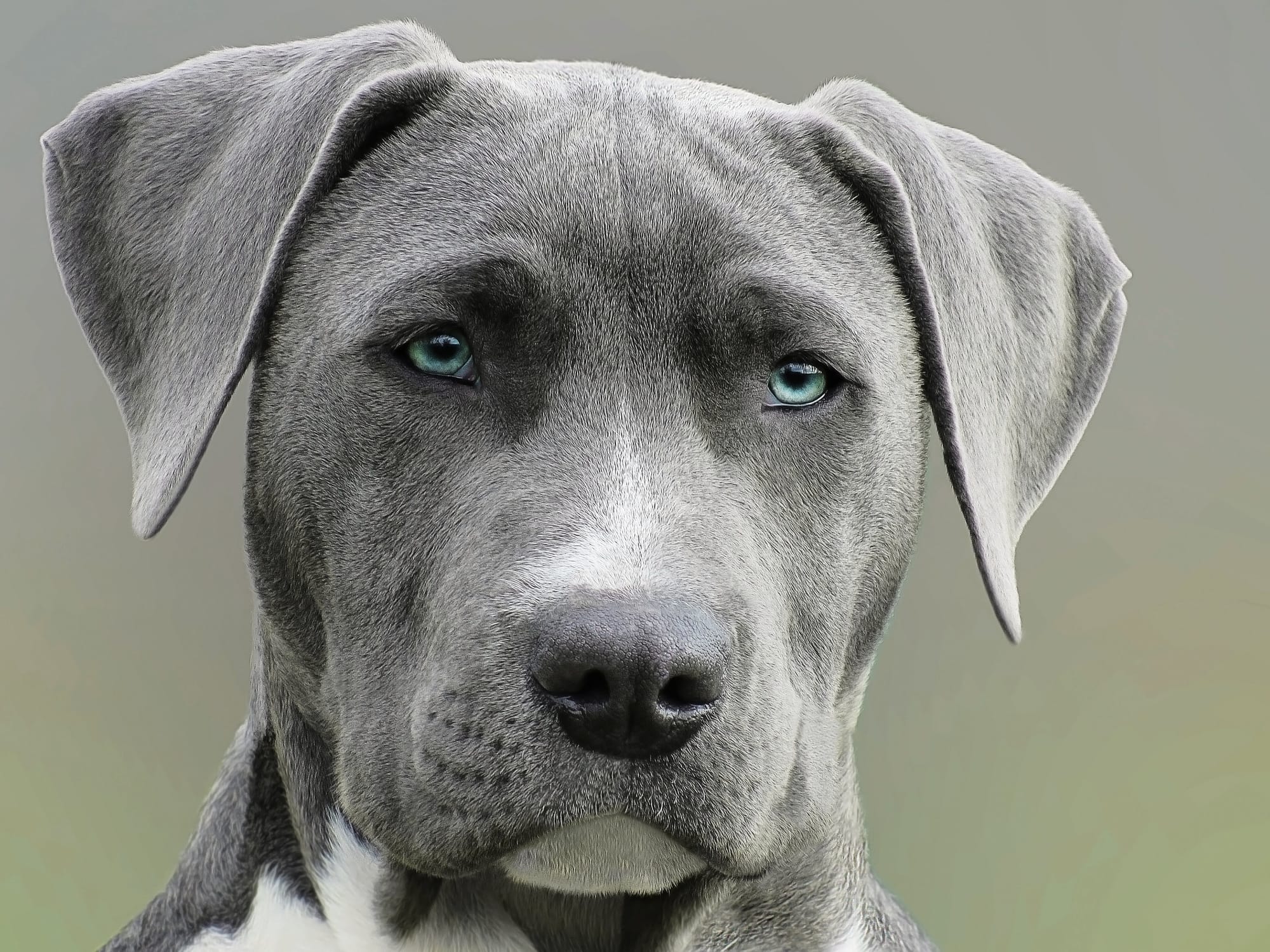The Leopard Hound is a unique and fascinating breed with a rich history and distinctive physical characteristics. Understanding this breed's origin, temperament, care, and training is essential for anyone considering a Leopard Hound as a pet.
By understanding the origin, physical characteristics, temperament, care, and training of the Leopard Hound, potential owners can make an informed decision about whether this breed is the right fit for their lifestyle and home.
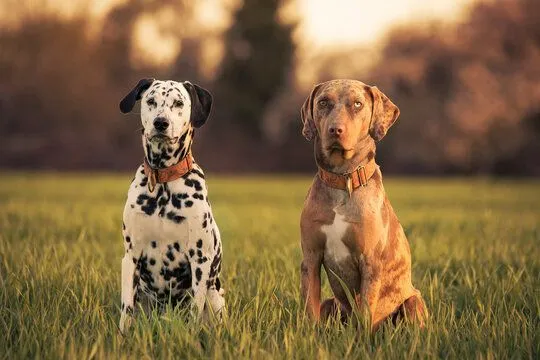
Origin and History of Leopard Hound
The origin and history of the Leopard Hound, also known as the Catahoula Leopard Dog, can be traced back to ancient times. This breed originated in the United States, specifically in Louisiana, and its ancestors can be traced back to dogs brought by Spanish explorers during the 16th century. These dogs, known as war dogs, later bred with Native American dogs, and played a crucial role in hunting and herding livestock in Louisiana's challenging landscape.
Over time, the Leopard Hound developed traits such as agility, intelligence, and a strong work ethic. It earned its name due to its unique coat pattern that resembles the spots of a leopard, serving as camouflage in the dense forests and swamps of Louisiana. This striking pattern made them highly valued among hunters and ranchers, contributing to their versatility and usefulness.
Today, the Leopard Hound holds the distinction of being the official state dog of Louisiana, deeply rooted in the cultural heritage of the region. These dogs continue to excel as working dogs, performing tasks such as herding livestock and contributing to various farm activities. Moreover, they are also cherished as loyal companions and family pets due to their affectionate nature and intelligence.
The origin and history of the Leopard Hound serve as a testament to the breed's resilience, adaptability, and significance in the development of Louisiana's agricultural and hunting traditions.
Physical Characteristics of Leopard Hound
With its striking physical attributes, the leopard hound is a breed that leaves everyone in awe. In this section, we'll dive into the mesmerizing coat and color variations that make these dogs truly unique. We'll explore their impressive size and build, shedding light on their athleticism and grace. So, get ready to discover the captivating physical characteristics that define the leopard hound.

Coat and Color
The coat and color of the Leopard Hound are important characteristics to consider when learning about this breed. Here is a list of key information regarding the coat and color of the Leopard Hound:
- The coat of the Leopard Hound is short, dense, and smooth. It provides protection and insulation for the dog.
- The color of the Leopard Hound's coat is typically a combination of black, brown, and tan. The pattern resembles the spots of a leopard, which is where the breed gets its name.
- The coat color may vary slightly between individuals, but the general pattern of spots is a distinctive feature of the breed.
- The coat requires regular brushing to remove loose hair and maintain its shine. This helps to keep the dog's coat healthy and prevents matting.
- It is important to note that the Leopard Hound's coat does not require extensive grooming or trimming like some other breeds.
- In terms of color variation, the coat of the Leopard Hound can range from lighter shades of brown to darker shades of black. The tan markings are usually present on the face, chest, and legs.
- The coat's color may slightly fade or darken as the dog ages, but the overall pattern of spots remains relatively consistent.
- The coat and color of the Leopard Hound contribute to its unique and eye-catching appearance, making it a visually striking breed.
Size and Build
The size and build of the Leopard Hound are important factors to consider when understanding this breed. Here is a list of key points regarding the size and build of a Leopard Hound:
- The Leopard Hound is a medium-sized breed, with males typically being larger and heavier than females.
- On average, male Leopard Hounds have a height at the shoulder ranging from 23 to 26 inches (58 to 66 cm), while females measure between 22 to 25 inches (56 to 64 cm).
- When it comes to weight, male Leopard Hounds can weigh between 55 to 80 pounds (25 to 36 kg), and females can range from 45 to 70 pounds (20 to 32 kg).
- They possess a well-muscled and athletic build, which enables them to excel in agility and endurance.
- The body of a Leopard Hound has a proportional and balanced appearance, featuring a deep chest and a sturdy, straight back.
- The front legs of the Leopard Hound are strong and straight, providing excellent support for their movements.
- The hindquarters of a Leopard Hound are well-developed, giving them the capability to generate power and speed.
- Leopard Hounds demonstrate a graceful and agile gait that reflects their natural athleticism.
- The coat of a Leopard Hound is dense and short, offering protection against the elements.
- This breed comes in various color patterns, with the most common being leopard-like spots on a white background.
Understanding the size and build of a Leopard Hound is crucial to ensure they are a suitable fit for your lifestyle and living conditions. Their medium size and athletic build allow them to thrive in an active environment where they can receive regular exercise to maintain their overall health and well-being.
Temperament and Personality of Leopard Hound
With their unique blend of intelligence and sociability, Leopard Hounds have a temperament and personality that sets them apart. In this section, we'll dive into their exceptional intelligence and trainability, as well as their social behavior and compatibility. Brace yourself for a sneak peek into the world of these remarkable canines, where smarts meet charm and companionship. Get ready to discover why Leopard Hounds are truly a breed like no other.
Intelligence and Trainability
When it comes to intelligence and trainability, the Leopard Hound is renowned for its remarkable capabilities. Here are some key points to consider about the intelligence and trainability of the Leopard Hound:
- The Leopard Hound is highly intelligent, showcasing its ability to learn and comprehend commands quickly.
- Thanks to its exceptional intelligence, this breed excels in obedience training and effortlessly acquires new skills and commands.
- For the Leopard Hound, consistent and positive reinforcement training methods yield the best results.
- They possess a natural inclination to please their owners, which contributes to their high trainability.
- Early socialization is vital for the Leopard Hound, as it aids in the development of good behavior and adaptability in diverse environments.
- They possess excellent problem-solving skills and can ingeniously overcome obstacles or challenges during training.
- Leopard Hounds thrive in environments that offer mental stimulation alongside physical exercise.
- This breed responds well to structured training sessions that incorporate both mental and physical exercises to keep them engaged.
- Their strong work ethic and focus empower them to excel in various dog sports and competitions.
- It is important to understand that while the Leopard Hound is highly intelligent and trainable, individual temperament and personality can vary within the breed.
By acknowledging the exceptional intelligence and trainability of the Leopard Hound, you can effectively train and mentally stimulate this breed, ensuring their well-being and happiness as a pet.
Social Behavior and Compatibility
Social behavior and compatibility are important factors to consider when it comes to owning a Leopard Hound. Here are some key points to keep in mind:
|
When choosing a Leopard Hound as a pet, consider your own lifestyle and the existing dynamics in your household. Ensure that you have the time, commitment, and ability to provide the social interaction and companionship that these dogs thrive on. With proper socialization and care, Leopard Hounds make excellent family pets and can bring joy and companionship to their owners.
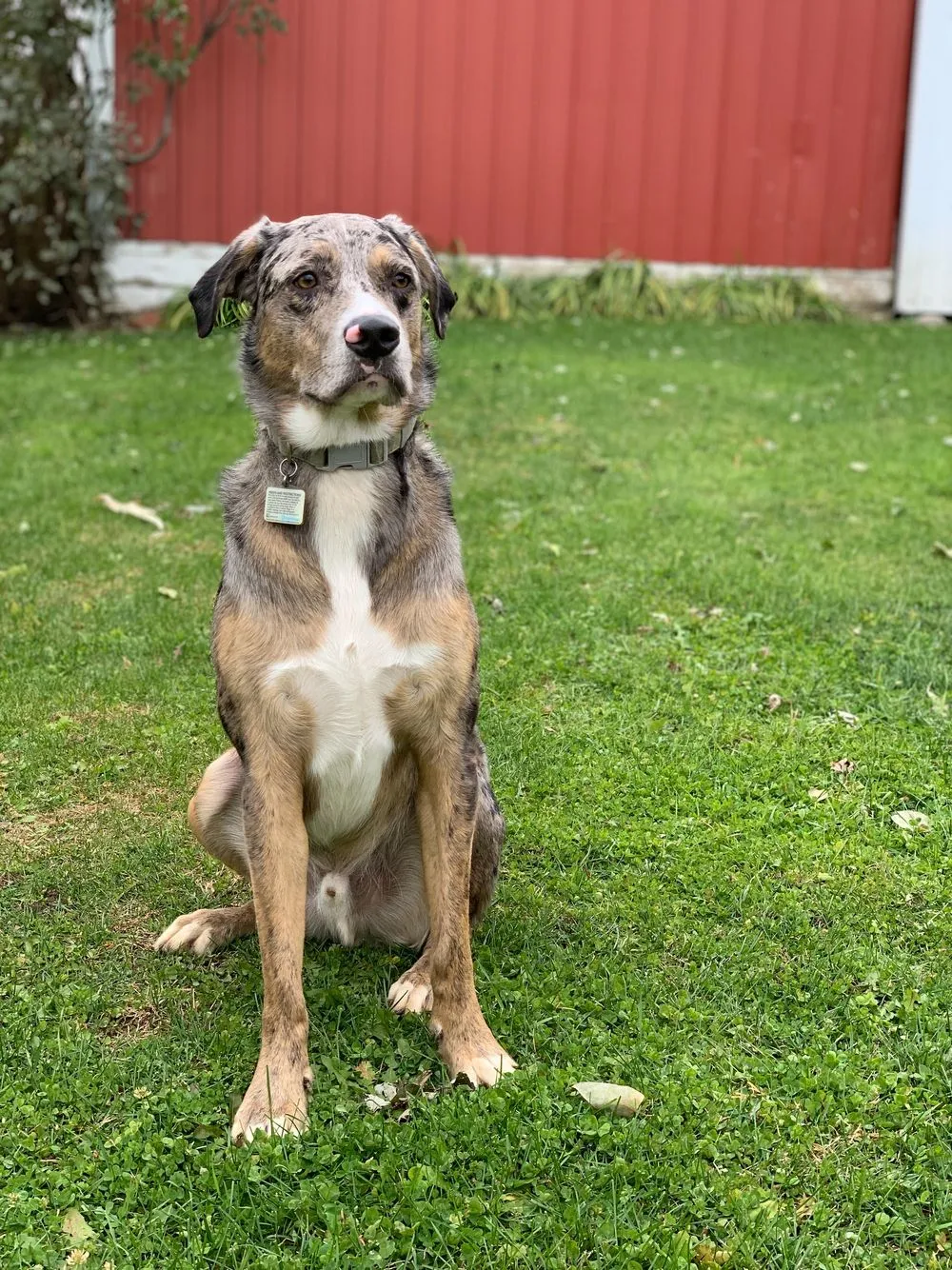
Care and Maintenance of Leopard Hound
Looking to give your leopard hound the best care possible? Dive into the essentials of leopard hound care and maintenance. From their diet and nutrition to exercise and grooming needs, we've got you covered. Discover the key factors to keep your leopard hound healthy, fit, and looking their best. So, let's jump in and explore the ins and outs of providing optimal care for your beloved leopard hound companion!
Diet and Nutrition
To provide information about the sub-topic "Diet and Nutrition" for the Leopard Hound, let's present the data in a table:
1. Nutritional Requirements
Leopard Hounds require a balanced diet consisting of protein, carbohydrates, fats, vitamins, and minerals. A high-quality dog food that meets these requirements is essential for their overall health and well-being. It is recommended to consult with a veterinarian to determine the specific nutritional needs of your Leopard Hound based on factors such as age, weight, and activity level.
2. Feeding Schedule
A regular feeding schedule should be established for your Leopard Hound to maintain proper digestion and prevent obesity. Adult Leopard Hounds typically require two meals per day, while puppies may require more frequent feeding. It is important to measure the food portions accurately to avoid overfeeding or underfeeding.
3. Avoidance of Certain Foods
It is crucial to refrain from feeding your Leopard Hound certain foods that can be harmful or toxic to them. These include chocolate, caffeine, onions, garlic, grapes, raisins, artificial sweeteners, and bones. It is important to avoid excessive table scraps or human food as it can lead to nutritional imbalances or weight gain.
4. Hydration
Providing fresh, clean water at all times is essential for maintaining your Leopard Hound's hydration. Along with a balanced diet, proper hydration is crucial for their overall health and well-being. Make sure to regularly refill their water bowl and monitor their water intake to ensure they stay adequately hydrated.
Pro Tip: When selecting a commercial dog food for your Leopard Hound, opt for brands that are specifically formulated for large breed dogs. These formulas often contain the appropriate balance of nutrients needed to support their growth and maintain a healthy weight.
Exercise and Activity
When it comes to exercise and activity, Leopard Hounds have specific needs that should be considered. Here are some important points to keep in mind:
- Leopard Hounds are a lively and energized breed that necessitates regular exercise to uphold their physical and mental well-being.
- Strive to offer at least 60-90 minutes of exercise for your Leopard Hound each day. This can include activities such as brisk walks, jogging, playing fetch, or engaging in agility training.
- Taking part in physical activities helps to prevent obesity and maintains the muscles and joints in good health. It also supports cardiovascular health.
- Leopard Hounds are renowned for their hunting instincts. To satisfy their natural instincts, include mental stimulation activities such as puzzle toys, scent tracking games, or sessions of obedience training.
- Diversify the types of exercise to keep your Leopard Hound mentally stimulated. They derive pleasure from exploring new environments, so contemplate taking them to different parks or trails for walks.
- Always provide fresh water and take regular breaks during exercise to avoid overheating and dehydration, particularly in hot weather.
- Take into account the age and health of your Leopard Hound when planning exercise routines. Puppies and older dogs may necessitate shorter and less intense exercise sessions.
- Remember that every dog is unique, and their exercise requirements may vary. Pay attention to their individual needs and adjust the duration and intensity of exercise accordingly.
By considering these factors and providing regular exercise and mental stimulation, you can help ensure that your Leopard Hound leads a happy and healthy life.
Grooming Needs
When it comes to grooming needs, the Leopard Hound requires regular care to keep its coat and skin healthy and clean. Here are some important considerations for grooming a Leopard Hound:
- Brushing: The Leopard Hound has a short, dense coat that requires regular brushing to remove loose hair and prevent matting. A grooming session with a slicker brush or a rubber curry brush once or twice a week will help maintain the coat's condition.
- Bathing: Bathing should be done on an as-needed basis, typically every 6-8 weeks. Use a mild shampoo specifically formulated for dogs to avoid drying out the skin. Take care to thoroughly rinse off all the shampoo to prevent any residue.
- Nail trimming: Regular nail trimming is essential to keep the Leopard Hound's nails at a suitable length. Overgrown nails can be uncomfortable for the dog and may cause issues with walking. Trim the nails every 2-4 weeks, depending on how fast they grow.
- Ear cleaning: The Leopard Hound is prone to ear infections, so regular ear cleaning is crucial. Check the ears weekly for any signs of redness, inflammation, or discharge. Use a veterinarian-recommended ear cleaner and gently wipe the inner ear with a cotton ball or pad.
- Dental care: Like all dogs, the Leopard Hound needs proper dental care to maintain good oral health. Brushing their teeth regularly with a dog-specific toothpaste and providing dental chews or toys can help prevent periodontal disease.
I once met a proud owner of a Leopard Hound named Max. Max was known for his impressive coat, which was always shiny and well-groomed. His owner diligently followed a grooming routine, which included regular brushing to address Max's grooming needs and make his coat look its best. Max absolutely loved his grooming sessions and would often wag his tail in excitement whenever the brush came out. His owner's commitment to maintaining Max's grooming needs not only made him look amazing but also helped form a strong bond between owner and canine companion.
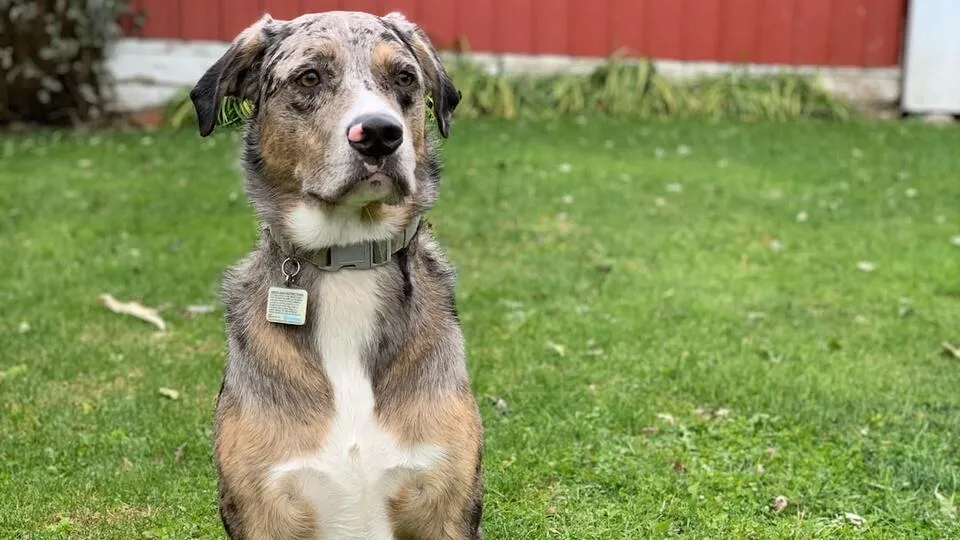
Health Issues and Concerns in Leopard Hound
Leopard Hounds are magnificent creatures, but just like any other breed, they have their fair share of health issues and concerns. In this section, we'll delve into the common health problems that Leopard Hounds may face and discover the preventive measures that can be taken to ensure their well-being. From potential ailments to helpful tips, we'll explore how to keep these beautiful dogs happy and healthy for years to come.
Common Health Problems
One must be aware of the common health problems that may arise in a Leopard Hound. These include:
- Hip dysplasia: Commonly found in larger dog breeds like the Leopard Hound, hip dysplasia occurs when the hip joint does not develop properly. This can lead to discomfort and mobility issues.
- Bloat: Bloat, also known as gastric dilatation-volvulus (GDV), is a life-threatening condition where the stomach fills with gas and twists. Immediate emergency veterinary care is necessary as it can cut off blood supply to the stomach and other organs.
- Ear infections: Leopard Hounds are prone to developing ear infections due to their floppy ears. Moisture and debris can become trapped in the ear canal, causing irritation and infection.
- Obesity: If not properly exercised and fed a balanced diet, Leopard Hounds have a tendency to become overweight. This can lead to various health problems, including joint issues and diabetes.
- Hypothyroidism: When the thyroid gland fails to produce enough thyroid hormone, it results in a condition called hypothyroidism. Symptoms may include weight gain, lethargy, and skin issues.
To ensure the well-being of your Leopard Hound, it is important to take preventative measures against these common health problems. Regular exercise, a balanced diet, and routine veterinary check-ups can help maintain their overall health and reduce the risk of these issues.
Fun Fact: On average, Leopard Hounds have a lifespan of 10 to 14 years. However, with proper care and attention to their health, they can live even longer!
Preventive Measures
- Regular veterinary check-ups: To ensure the overall health and well-being of your Leopard Hound, it is important to schedule regular check-ups with a veterinarian. This allows for early detection and prevention of any potential health issues.
- Vaccinations: Keeping your Leopard Hound up-to-date on vaccinations is crucial in preventing the spread of contagious diseases. Consult with your vet to ensure your pet receives all necessary vaccines.
- Parasite control: Implementing preventive measures against parasites such as fleas, ticks, and heartworm is essential. Use appropriate medications or treatments recommended by your vet to protect your Leopard Hound.
- Proper diet and nutrition: Providing a balanced and nutritious diet plays a key role in maintaining your Leopard Hound's health. Feed them high-quality dog food that meets their specific dietary needs and avoid overfeeding to prevent obesity.
- Regular exercise: Regular exercise helps prevent obesity, promotes cardiovascular health, and keeps your Leopard Hound mentally stimulated. Engage in daily activities like walks, playtime, or interactive games.
- Dental care: Preventive measures dental care is important to maintain your Leopard Hound's oral health. Brush their teeth regularly and consider providing appropriate dental chews or toys to promote good dental hygiene.
- Safe environment: Create a safe and secure environment for your Leopard Hound to prevent accidents or injuries. Remove any potential hazards, secure fences and gates, and provide appropriate supervision when needed.
- Socialization and training: Proper socialization and training are important for a well-behaved and well-adjusted Leopard Hound. Expose them to various environments, people, and other animals from an early age to prevent behavioral issues.
- Maintain a stress-free environment: Stress can negatively impact your Leopard Hound's health. Provide a calm and stress-free environment, offer mental stimulation, and ensure they have a comfortable sleeping area.
Training and Obedience for Leopard Hound
When it comes to training and obedience for leopard hounds, there are two key aspects to focus on: mastering basic commands and ensuring effective house training. In this section, we'll dive into these crucial sub-topics, exploring how teaching fundamental commands helps establish a strong bond between the hound and owner, while effective house training sets the foundation for a well-behaved and happy leopard hound. Let's explore these essential training techniques to ensure your leopard hound thrives in both obedience and domesticity!
Basic Commands
When training a Leopard Hound, it's crucial to start with the fundamental building blocks and establish a solid groundwork of obedience. Here are some vital basic commands for your Leopard Hound:
- Sit: Begin teaching your Leopard Hound to sit on command by gently exerting pressure on their hindquarters while instructing "sit." Make sure to reward them with praise or a treat when they successfully comply with the command.
- Stay: Instruct your Leopard Hound to remain in one place by issuing the command "stay" while holding your hand up in a stop sign gesture. Gradually extend the duration of the stay and recognize their compliance with a reward.
- Come: Train your Leopard Hound to come to you when called by using the command "come" followed by their name. Employ treats or toys as a rewarding incentive when they come to you.
- Down: Teach your Leopard Hound to lie down on command by gently guiding them into a lying position with the command "down." Show appreciation for their obedience and encourage them to maintain the position.
- Leave it: Train your Leopard Hound to respect objects by using the command "leave it." Begin by displaying a treat and then concealing it with your hand, instructing them to "leave it." Acknowledge and reward their indifference towards the treat.
Pro-tip: Consistency is key when training your Leopard Hound. Utilize the same commands and reward system consistently, and engage in regular practice sessions to reinforce their comprehension of these basic commands. Always remember to employ positive reinforcement and reward-based training methods for optimal outcomes.
House Training
House Training is a crucial aspect of owning a Leopard Hound. Here are the steps to successfully house train your Leopard Hound:
- Establish a designated toilet area: Choose a specific spot in your yard where you want your Leopard Hound to eliminate. Take them to this area regularly, especially after meals or waking up from a nap.
- Create a routine: Establish a consistent schedule for feeding, watering, and bathroom breaks. Dogs thrive on routine, so a predictable schedule will make house training easier.
- Monitor their behavior: Watch for signs that your Leopard Hound needs to go potty, such as sniffing around or circling. When you notice these behaviors, immediately take them to the designated toilet area.
- Use positive reinforcement: Praise and reward your Leopard Hound with treats or praise when they eliminate in the designated area. This positive reinforcement will help them associate going potty in the correct spot with positive experiences.
- Supervise indoors: When your Leopard Hound is inside the house, keep an eye on them at all times. If you notice any signs that they need to go potty, quickly take them outside to the designated area.
- Interrupt accidents: If you catch your Leopard Hound in the act of eliminating indoors, calmly interrupt them with a firm "No" and immediately take them outside.
- Clean up accidents properly: Accidents happen, especially during the training process. Use an enzymatic cleaner to thoroughly clean up any messes, as it will eliminate the odor that might attract them to eliminate in the same spot again.
By following these steps consistently and patiently, you can effectively house train your Leopard Hound and ensure a clean and comfortable living environment for both you and your furry companion.
Leopard Hound as a Pet
Leopard Hounds make wonderful pets, and in this section, we'll explore why they are such a great fit for families and the ideal living conditions for these magnificent creatures. From their temperaments to their adaptability, we'll uncover the unique characteristics that make them an excellent choice for those looking to add a furry friend to their household. So, let's dive into the world of Leopard Hounds and discover why they're the perfect companions for your family!
Suitability as a Family Pet
The suitability of a Leopard Hound as a family pet can be evaluated based on various factors such as temperament, energy level, and compatibility with children and other pets. Here are some key points to consider:
- Temperament: Leopard Hounds are known for their friendly and affectionate nature, which makes them well-suited for family life. They have a suitability as a family pet and are generally good with children and enjoy being part of a pack.
- Energy Level: These dogs have a moderate energy level and require regular exercise to keep them happy and healthy. They enjoy activities such as walks, playtime in the yard, and engaging in interactive games with their family members. Their suitability as a family pet is evident in their need for physical activity.
- Compatibility with Children: Leopard Hounds are usually gentle and patient with children. They can form strong bonds with kids and are often tolerant of their playful antics. It is essential to teach children how to interact appropriately with dogs to ensure a harmonious relationship with their family pet.
- Compatibility with Other Pets: Leopard Hounds can generally get along well with other pets, including cats and smaller dogs, especially if they are socialized from a young age. As family pets, their suitability extends to their ability to coexist peacefully with other animals. Proper introductions and gradual acclimation are crucial.
- Training and Socialization: These dogs are intelligent and trainable, making them suitable for families looking for a pet that can be easily taught basic commands and household manners. Their suitability as a family pet is reflected in their intelligence and trainability. Early socialization is vital to ensure they grow up to be well-rounded and well-behaved pets.
- Living Conditions: Leopard Hounds can adapt to various living environments but thrive best in homes with a securely fenced yard where they can explore and play freely. Their suitability as a family pet includes the need for sufficient space to roam and exercise.
- Maintenance: Leopard Hounds have a short and low-maintenance coat that only requires regular brushing to keep it clean and free from loose hair. Their low-maintenance coat adds to their suitability as a family pet.
Considering these factors, Leopard Hounds can be a great choice for families seeking a friendly, loyal, and adaptable pet to join their household.

Living Conditions
Leopard Hounds have specific living condition requirements that should be considered before bringing one into your home. When it comes to the living conditions of a Leopard Hound, there are several important factors to keep in mind.
Firstly, these dogs are active and energetic, so they need ample space to move around and exercise. They are not well-suited for apartment living and do best in houses with a large fenced yard where they can freely run and play.
Secondly, a secure and high-fenced yard is essential for a Leopard Hound. Their agility may lead them to attempt escape if they feel confined. Providing a safe and spacious outdoor area for them to explore and enjoy is crucial for their overall well-being.
Furthermore, Leopard Hounds have a short coat that doesn't offer much insulation. Therefore, they are sensitive to extreme temperatures, especially cold weather. It is important to provide them with a warm and comfortable living environment. During colder months, consider using appropriate clothing or blankets to keep them cozy and ensure their health and happiness.
In addition to physical needs, Leopard Hounds are social animals that thrive on companionship and interaction with their human families. It is crucial not to leave them alone for long periods as it can cause anxiety and behavioral issues. Having a family member or companion pet around is beneficial for their mental and emotional well-being.
Pro-tip: If you reside in a colder area, it is recommended to designate a cozy indoor space for your Leopard Hound during the colder seasons. This can be a room or a specific area with comfortable bedding, ensuring they stay warm and protected from the elements. Additionally, providing plenty of mental and physical stimulation is important to prevent boredom and keep them entertained.
Frequently Asked Questions
1. What are the general characteristics of the American Leopard Hound?
The American Leopard Hound is known for its intelligence, strong tracking abilities, and keen sense of smell. They are energetic, sociable, and have a lean and powerful form. They bond strongly with humans and are protective of children, making them suitable for families. They require a big yard to run around in and are great for single pet parents or households with children.
2. What is the history of the American Leopard Hound?
The American Leopard Hound, also known as the Leopard Cur, originated from Mexico and was brought to North America by Spanish conquistadors. It is one of the oldest tree dog breeds in the U.S.
3. How does the American Leopard Hound behave as a hunting dog?
The American Leopard Hound is a natural hunting dog with strong tracking abilities. They have the ability to track prey for long distances. With their intelligent and agile nature, they excel in hunting tasks and have a keen sense of agility.
4. What are the recommended adoption options for the American Leopard Hound?
It is recommended to adopt the American Leopard Hound from local shelters or rescues instead of buying them. This helps in supporting the cause of responsible dog ownership and gives these loving and loyal dogs a chance to find a forever home.
5. How does the American Kennel Club (AKC) contribute to the development of dog sports?
The American Kennel Club (AKC) is a reputable organization that promotes responsible dog ownership and supports the development of dog sports. They provide information on dog breeds, health, training, and establish standards for various dog competitions.
6. Is the American Leopard Hound suitable for apartment living?
The American Leopard Hound can adapt well to apartment living if they display qualities such as being quiet, low-energy, and well-behaved towards other residents. Although they require a big yard to run around in, indoor playtime and regular exercises can help fulfill their energetic needs in an apartment setting.
